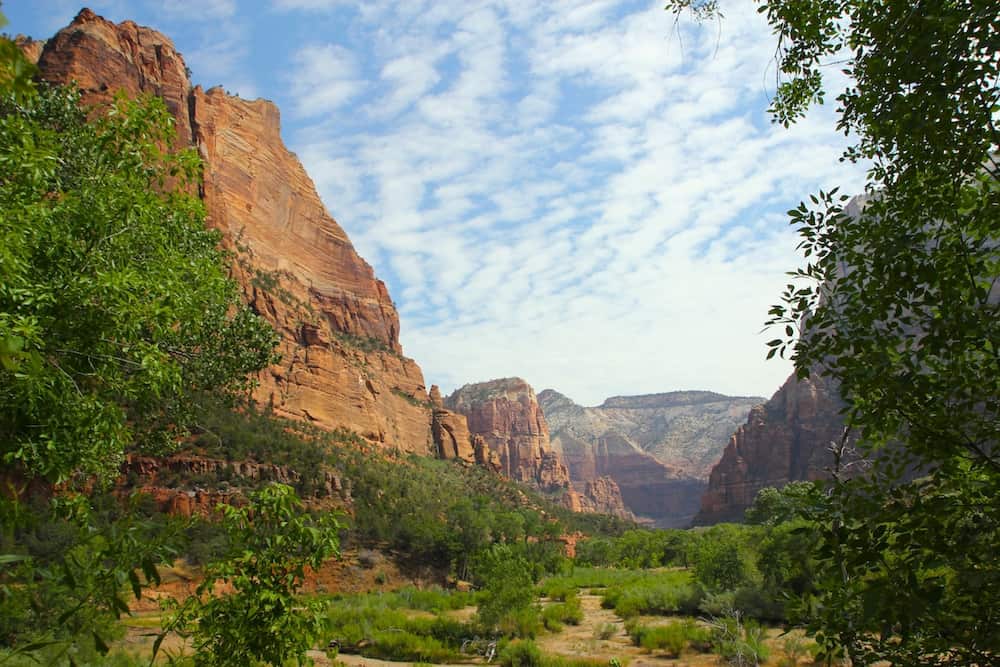
Utah is home to the Mighty Five, U.S. National Park standouts like Arches, Bryce Canyon and Zion National Parks. The best thing about Utah’s National Parks is you can road trip to each in about a week. With Las Vegas as your base, travelers can fly in and grab a rental car. It’s hard to believe that just a few hours north of the Strip, travelers can splash their feet down Zion’s legendary trail, the Narrows. Drive a few hours more, and then it’s the pink-hued spires of Bryce Canyon. Then there’s Arches and the fruit trees of Capitol Reef. Here is the Best Utah National Park Itinerary from Las Vegas.
A word about reservations: lodging and camping reservations are essential at all times of the year. Most of Utah is sparsely populated, and the towns are generally small with limited rooms. Packing food for your road trip is also a good idea, especially for lunch and snacks. Las Vegas offers the most selecion. St. George along Interstate 15 is another option.
National Park Timed Entry Information
For Arches National Park, a timed entry reservation is required from April 1 to October 31 ($2). It is not available at the park, so visitors must secure one in advance. Each month’s timed entry tickets are released three months in advance, though additional tickets are released the day before.
Visitors who didn’t secure a ticket can enter the park before 7 a.m. or after 4 p.m. Arches National Park isn’t a national park that you can walk park outside the park and walk into. It doesn’t offer a shuttle system either (like Zion National Park).
Since this trip involves several national parks, an America the Beautiful annual NPS pass is a good idea. The annual pass costs $80 and can be purchased at parks or online.
Why Visit the Utah National Parks on a Road Trip
For those yearning for a road trip to see the top US National Parks, Utah is an easy yes. The Mighty 5, or Utah’s five National Parks, are each less than two hours from one another. Add the ease of flying into Las Vegas and renting a car, and a Utah National Park road trip is realistic within a week.
What I love about this trip is the diversity of the landscape in Utah. From Zion’s sandstone to Arches’ gravity-defying arches, visitors can experience a lot of wow in a week. If travelers have a few more days, they can easily add the North Rim of the Grand Canyon to this itinerary.
Utah National Park Itinerary from Las Vegas
Day 1 Las Vegas
Start your Utah National Park itinerary from Las Vegas, especially if you are flying. With many flights from across the world, travelers will find a dizzying number of hotel rooms along with dining and entertainment galore. Additionally, if you can’t buy it in Vegas, it’s not made.
After arriving, I recommend packing your rental car with supplies for your road trip. Southern Utah gets a little sparse, so plan on buying road trip snacks along with basic picnic supplies.
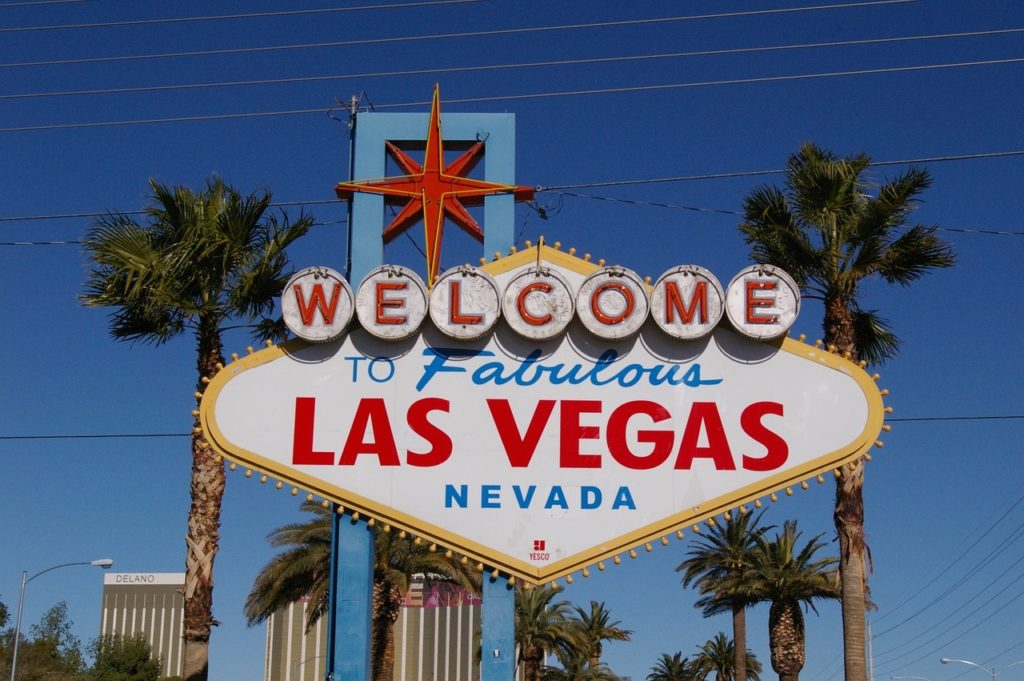
Depending on your interest, I recommend arranging a show and sampling a new restaurant in Las Vegas. Definitely walk down a portion of The Strip. Find lots of free entertainment outside of the casinos, like the Bellagio’s Dancing Waters and the Freemont Street Experience.
For the first leg of the trip, drive to Moab, Utah, to Arches National Park. It’s 450 miles (750 km) from Las Vegas and will take six or seven hours. This will be the longest day of driving, so do it on the first day and not the last day of your trip. Do yourself a favor and take Interstate 15 and Interstate 70 for the fastest drive.
National Park Passes Guide
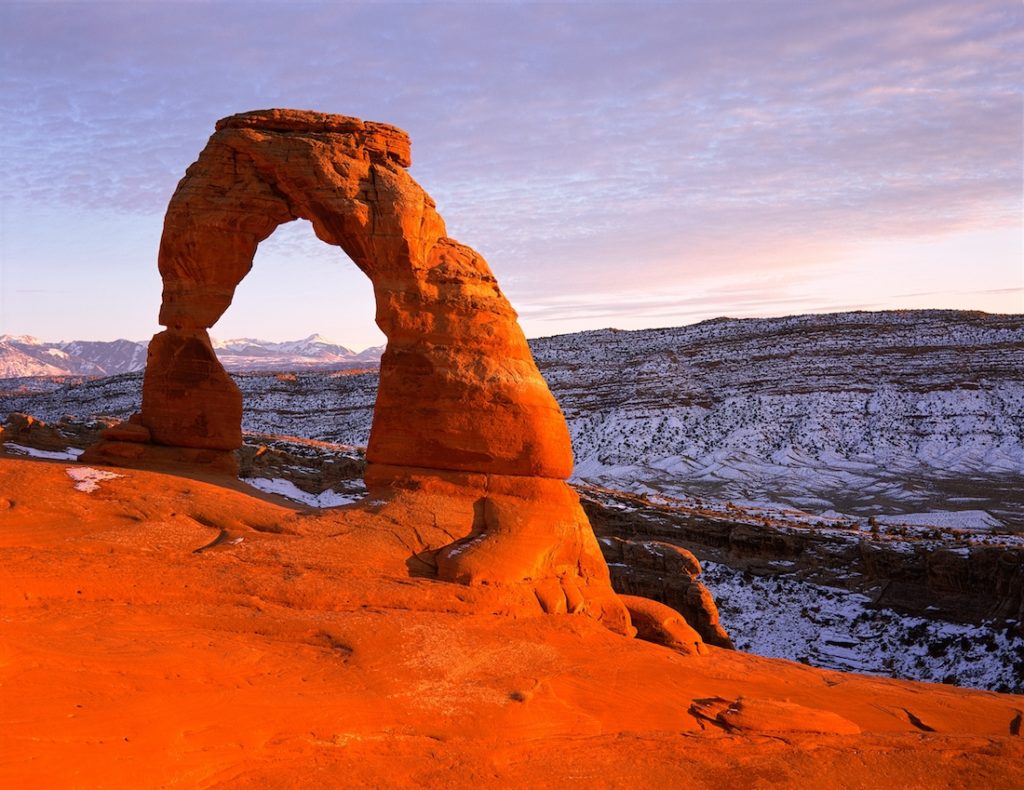
Day 2 Arches National Park
Time has carved Utah’s red rocks into at least 2,000 natural stone arches. Arches National Park is routinely considered one of the top national parks in the U.S. Though the arches are center stage, visitors will see pinnacles, fins and balance rocks.
What to do in Arches National Park
To see the best of Arches National Park, use a combination of driving and hiking, according to your ability.
Park Avenue and Courthouse Towers Area—Features high rock walls and pinnacles with an accessible viewpoint.
Balanced Rock—At 128 feet tall, it glows in the afternoon sun. Find an accessible viewpoint at this popular spot.
The Windows Section—If you are limited on time, See the North Window, Turret Arch and the Double Arch. It’s the best area to see.
Delicate Arch—The most famous arch, and it offers an accessible viewpoint. The hike to Delicate Arch is a difficult 3-mile (4.8 km) trail.
Devils Garden—Find the Landscape Arch in this area. It’s a 1.6-mile (2.5 km) easy hike.
Getting to Arches National Park
Arches National Park and Canyonlands National Park are located close together. Arches National Park is five miles north of Moab. It is open 365 days a year and 24 hours a day. A seven-day pass for Arches National Park is $30. It also requires a timed entry reservation, purchased in advance through Recreation.gov ($2).
With limited services, remember to carry enough water and food for the day. Visitor centers offer hydration stations though bottled water is not for sale in the national parks.
National Parks a Road Trip Away from LA
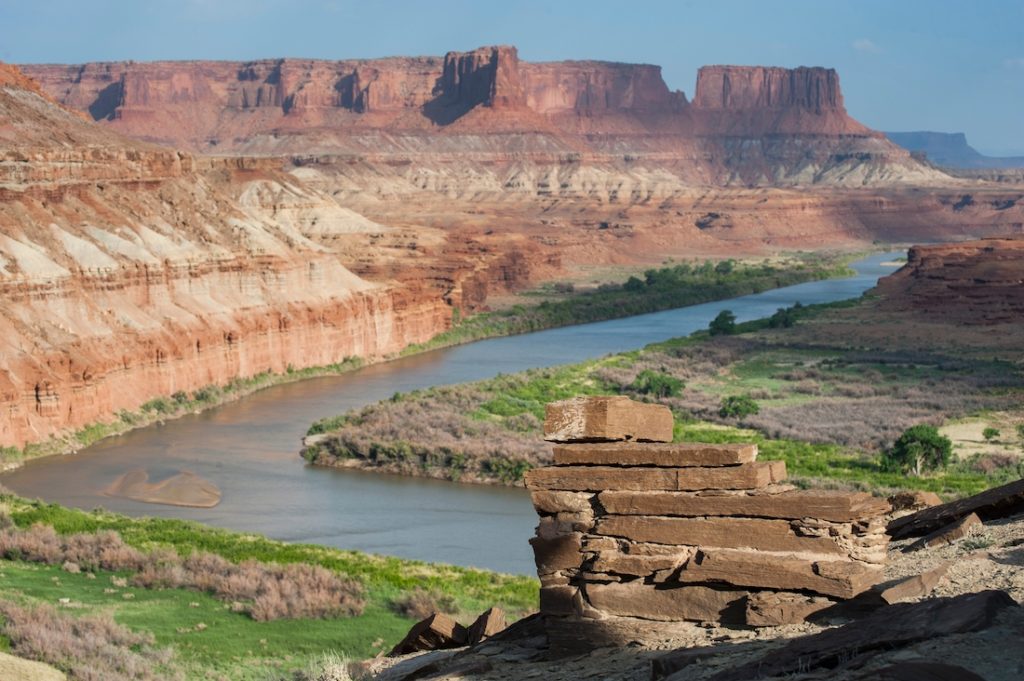
Day 3 Canyonlands National Park
You can see the buttes carved by the Colorado River and its tributaries. The park is divided into four distinct districts. The Island in the Sky district is the most accessible for first-time visitors.
What to do in Canyonlands National Park
The Island in the Sky features a visitor center and is easy to explore in a few hours. See the Utah landscape unfold from the top of 100-foot sandstone cliffs. Take the 34-mile (54 km) round-trip scenic drive to the viewpoints. For a popular photo opportunity, hike to the Mesa Arch, an easy .5-mile (.8 km) hike.
Getting to Canyonlands National Park
The Islands in the Sky entrance is 10 miles (16 km) north of Moab. Canyonlands National Park is open 365 days a year and 24 hours a day. A seven-day pass for Canyonlands National Park is $30.
Canyonlands National Park is about 115 miles (185 km) from Natural Bridges National Monument. To reach it, take Utah Route 95 and U.S. Highway 191, part of the Trail of the Ancient National Scenic Byway.
Where to Stay near Canyonlands and Arches National Parks
Since the national park sites in eastern Utah don’t offer lodging, head to Moab. There, you can find a full range of lodging, restaurants, outdoor outfitters and tours.
Summertime Guide to the North Rim of the Grand Canyon

Natural Bridges National Monument
See three natural bridges in Utah’s first national monument. With a nine-mile scenic loop drive, see the Sipapu Bridge, Kachina Bridge and Owachomo Bridge.
Where’s Natural Bridges National Monument
Natural Bridges National Monument is located in-between Canyonlands National Park andCapitol Reef National Park, east of Blanding, Utah. It’s about 115 miles (185 km) from Moab along Utah Route 95.
Natural Bridges National Monument is open 365 days a year and 24 hours a day. A seven-day Natural Bridges National Monument is $20.
Day 4 Capitol Reef National Park
Located between Canyonlands and Bryce Canyon national parks, find the Waterpocket Fold, a geologic monocline at Capital Reef National Park. It’s a wrinkle in the earth’s surface. In the 1800s, Mormon pioneers came and planted over 2,700 fruit trees.
What to do in Capitol Reef National Park
Take the Scenic Drive, a 7.9-mile (12.7 km) one-way drive to the Fruita Historic Area. Explore the original orchards, where you can pick seasonal fruit.
Find the blacksmith shop, then check out the Fruita Schoolhouse. The Gifford House Store and Museum sells freshly baked pies, bread and cinnamon rolls.
Hike the Sunset Point Trail, a .4-mile (.6 km) easy trail. Find it off Utah Route 24.
Where to stay near Capitol Reef National Park
Capitol Reef National Park doesn’t offer lodging inside the park. However, you can find 3-star lodging in the nearby town of Grover.
Getting to Capitol Reef National Park
Capitol Reef National Park is about 130 miles (209 km) from Natural Bridge National Monument. To reach it, take Utah Route 95, a Utah Scenic Byway.
Capitol Reef National Park is open 365 days a year and 24 hours a day. A seven-day Capitol Reef National Park is $20.
Day 5 Bryce Canyon National Park
See the pink spires of Bryce Canyon National Park from its canyon rim. Or take a hike down to walk among them. And don’t forget to stare at the stars if you visit near nightfall.
What to do in Bryce Canyon National Park
Hike from the Sunrise Point to Sunset Point, an easy 1.0-mile (1.6 km) hike along the edge of Bryce Canyon. The Navajo Trail offers an up-close look at Bryce’s rock formations as the trail takes hikers down into the Bryce Amphitheater slot canyon, a 1.3-mile (2 km) moderate trail.
Explore Bryce Canyon on horseback with a one-and-half-hour guided tour that takes small groups to Fairy Castle and back. A three-hour tour explores the Peek-a-Boo Loop by horseback.
Best National Parks for Fall Color

Where to Stay in Bryce Canyon National Park
Bryce Canyon Lodge is a 1925 historic lodge listed on the Register of Historic Places. It features a restaurant, a pizzeria, lodge rooms and a few suites. Western cabins offer rustic elegance, located steps from the canyon edge and the lodge.
Getting to Bryce Canyon National Park
Bryce Canyon National Park is 130 miles (209 km) from Capitol Reef National Park along Utah Route 12. It offers a free seasonal shuttle bus that departs from the visitor center every 15 minutes and stops at the lodge, the campgrounds and Sunset, Bryce, Inspiration and Sunset Points.
Bryce Canyon National Park is open 365 days a year and 24 hours a day. A seven-day pass for Bryce Canyon National Park is $35.
Bryce Canyon National Park Guide

Day 6 Zion National Park
What began as a windswept desert 180 million years ago, time slowly compressed the sand into the Navajo Sandstone that rises 2000 feet today. The sandstone dominates Zion National Park with its bold rock formations, craved by a mostly tame Virgin River. With reoccurring floods, water sculpted the canyon with the eye of an artist.
It’s a part of the Grand Staircase of southern Utah and northern Arizona. As a geologic survey, 500 million years of history can be studied in the rock layers. Grand Canyon represents the bottom layer, and Bryce Canyon National Park represents the most recent layer. Zion is sandwiched in the middle.
What to do in Zion National Park
The Lower Emerald Pool Trail offers a 1.2-mile (1.9 km) paved round-trip hike to a 100-foot waterfall right across from the Zion Lodge. Or try the Riverside Walk at the Temple of Sinawava shuttle stop. I found a wheelchair-accessible 2.2-mile (3.5 km) roundtrip trail from the Virgin River to the Narrows.
Zion National Park offers guided one-hour and three-hour horseback rides. Or take a guided scenic tour aboard a bus to see all the photo-worthy sights.
Note: The popular Angels Landing Trail requires timed entry tickets, which are available via lottery. This is for the chain section only.
Zion National Park Guide
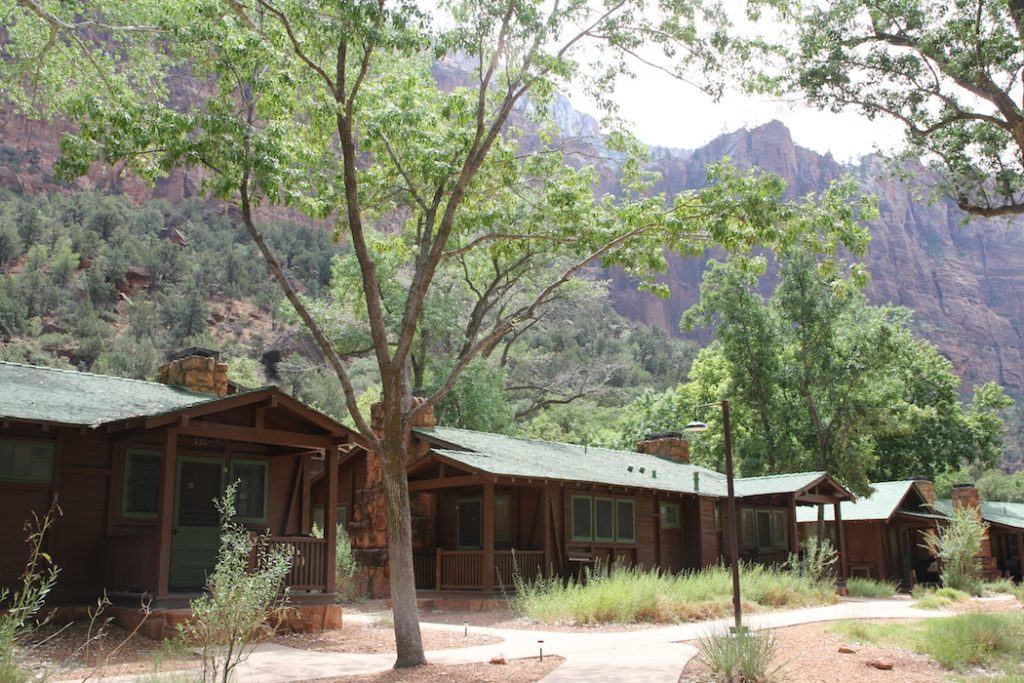
Where to Stay in Zion National Park
Inside the park, Zion Lodge offers a main building that sits on the spot of the original lodge, which burned in the 1960s. Modern hotel rooms and historic western cabins from the 1930s flank the lodge building, which houses a restaurant, a café, a coffee bar, a gift shop and an outdoor patio.
Getting to Zion National Park
Take U.S. Route 89, also known as the National Park Highway, and Utah’s Route 9, Zion National Park Scenic Byway, to get to Zion National Park.
Zion National Park is open 365 days a year and 24 hours a day. A seven-day pass for Zion National Park is $35.
Zion National Park uses shuttles to transport visitors around the park. From the nearby town of Springdale, you can find two different routes, the Zion Canyon Shuttle and the Springdale Shuttle. Parking is limited in the park, especially during the summer and popular weekends.
If a week is all you have, head back to Las Vegas. If time allows, visit the North Rim of Grand Canyon National Park.
Grand Canyon National Park Planning Guide for the South Rim
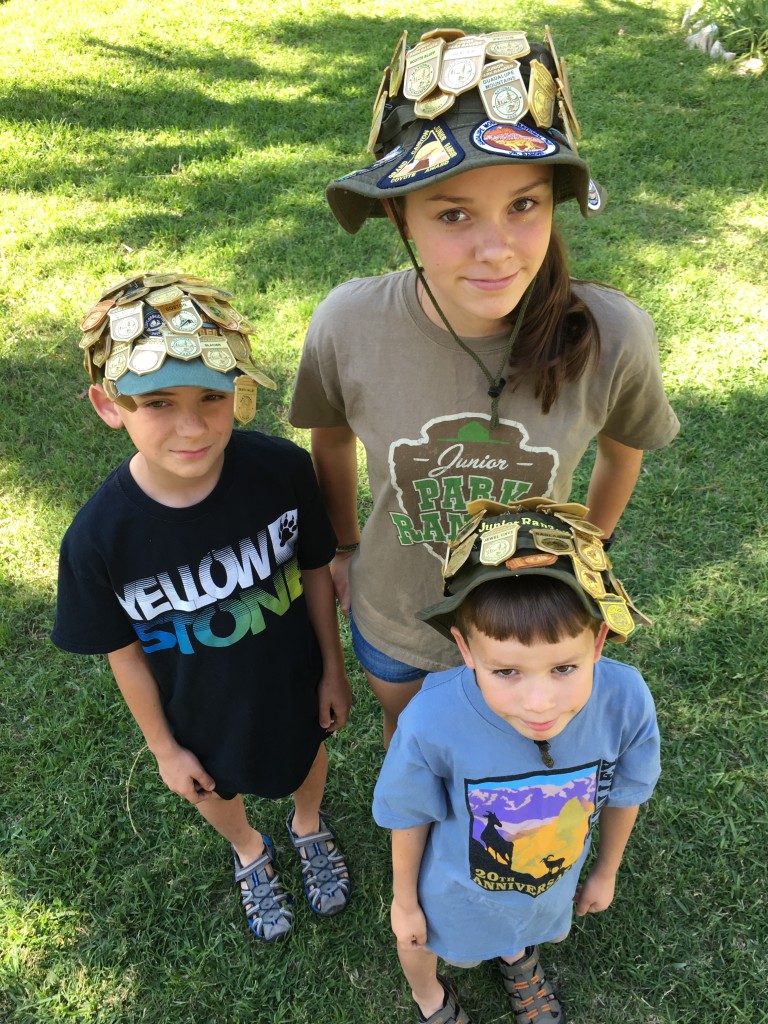
Kids in National Parks
With the Junior Ranger Program, kids can earn a free souvenir at each of Utah’s national park sites. They can also grab a booklet at the visitor center and explore the park.
After completing the required activities, turn the Junior Ranger booklet into a park ranger. After a short review of what’s important in the park, kids raise their hands and recite the Junior Ranger Oath.
Junior Ranger Guide for Badges to Earn at Home
National Park Road Trip Tips
- Arrive early for parking at Utah’s Mighty 5.
- Purchases an America the Beautiful annual pass ($80) if visiting more than two national park sites during your trip. It’s available for all visitors and covers everyone in the vehicle.
- Wear appropriate clothing and shoes. Hats, sunglasses, long shirts, and hiking boots or sandals are necessary, even in summer.
- Pack snacks and picnic supplies for your Utah National Park Road trip.
- Carry water and water containers. Find water fountains at visitor centers and restrooms throughout the national parks.
- Carry a paper map; data service is spotty in the park and mountainous areas.
- Give wild animals at least 25 yards of space, and don’t feed them.
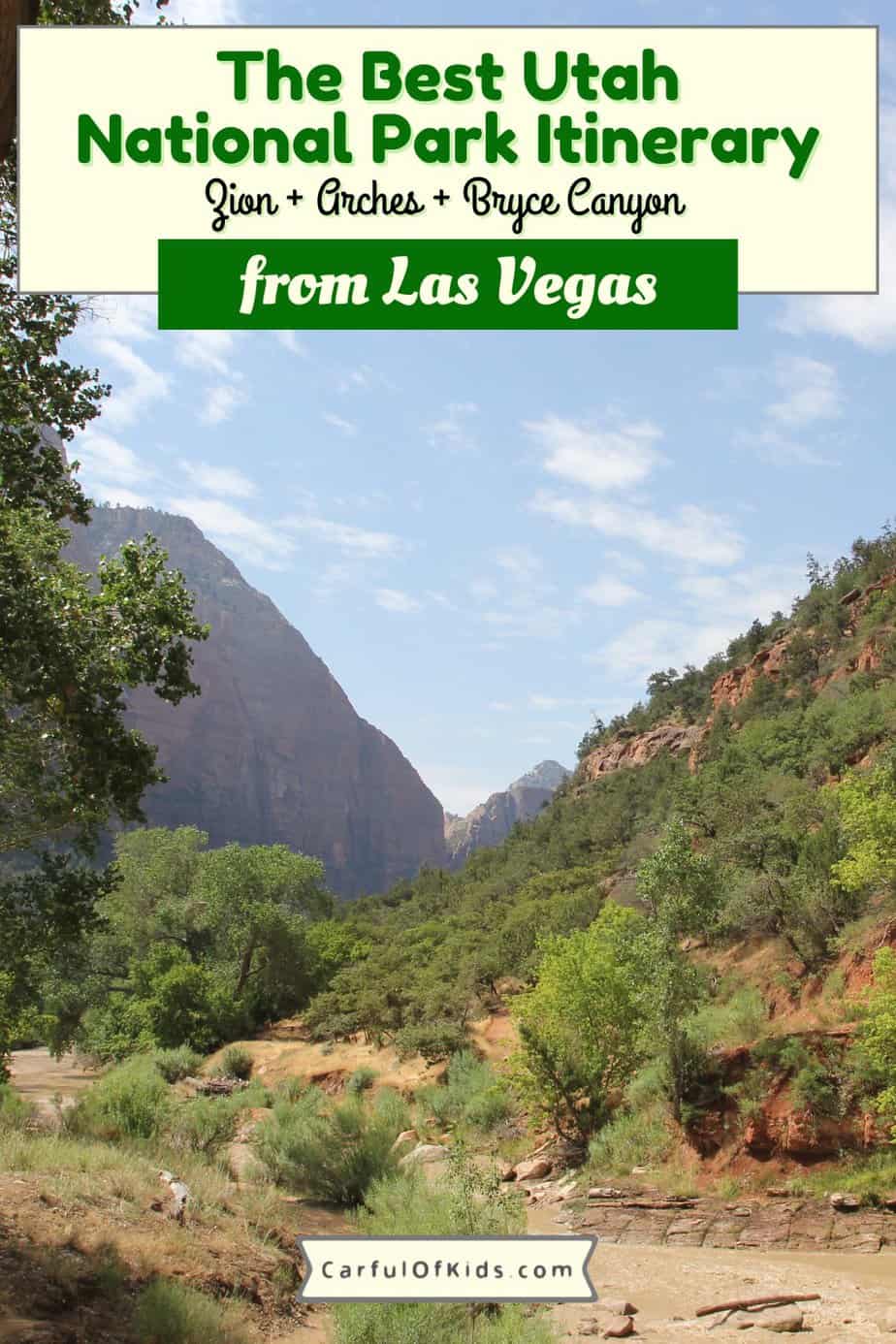

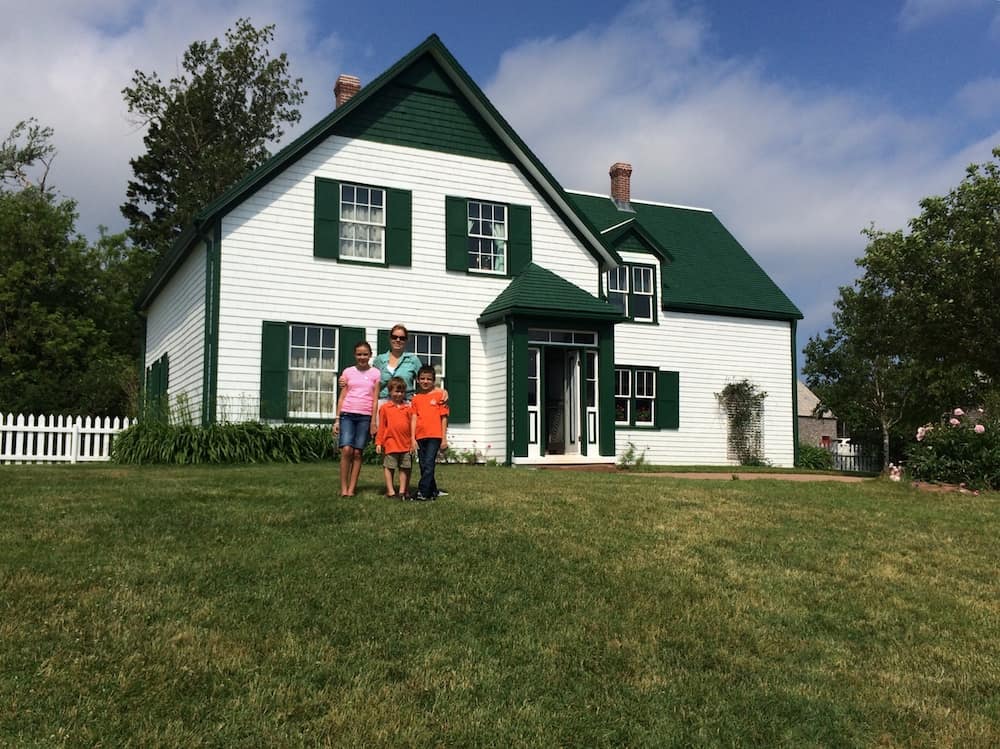
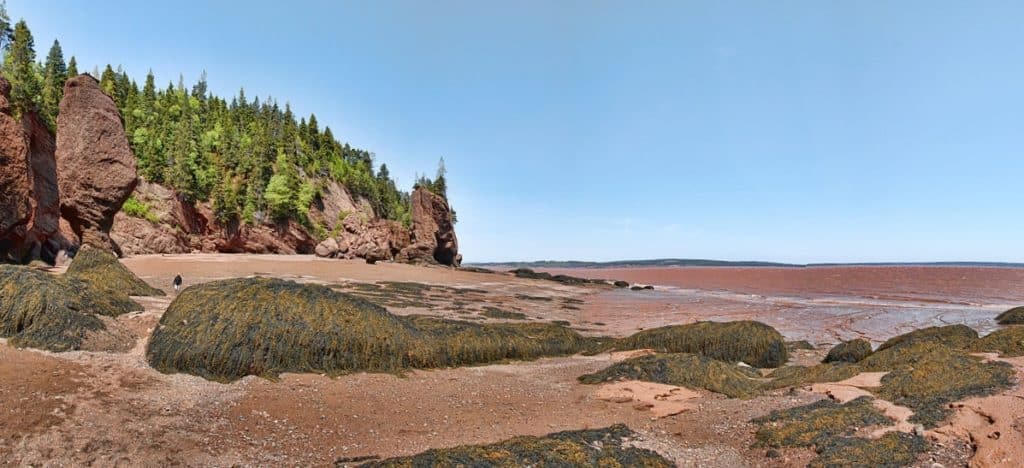
Comments are closed.